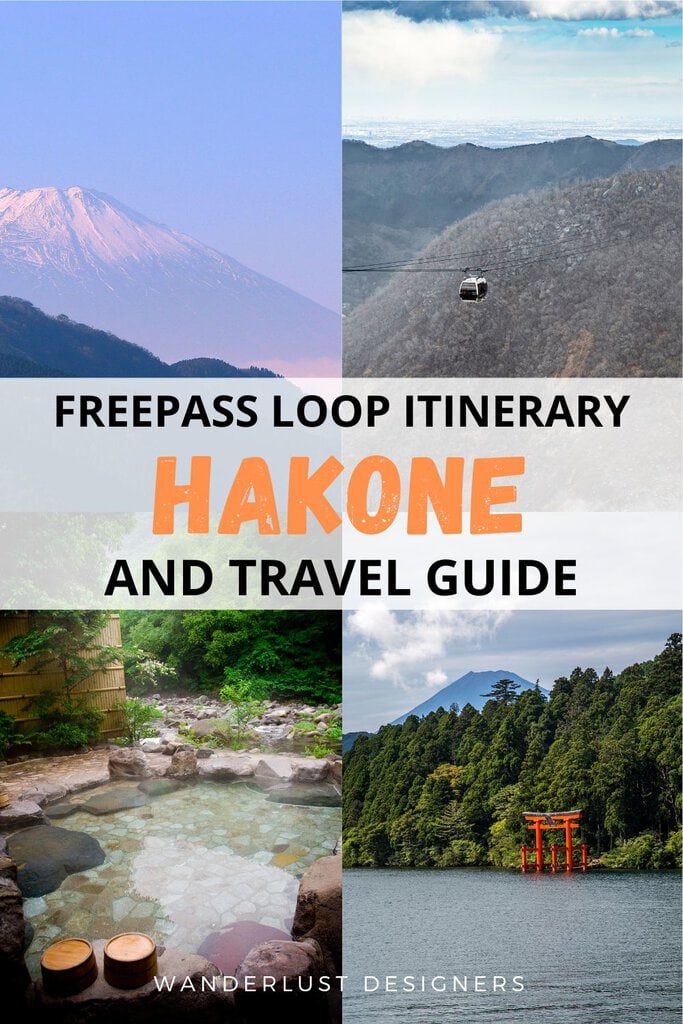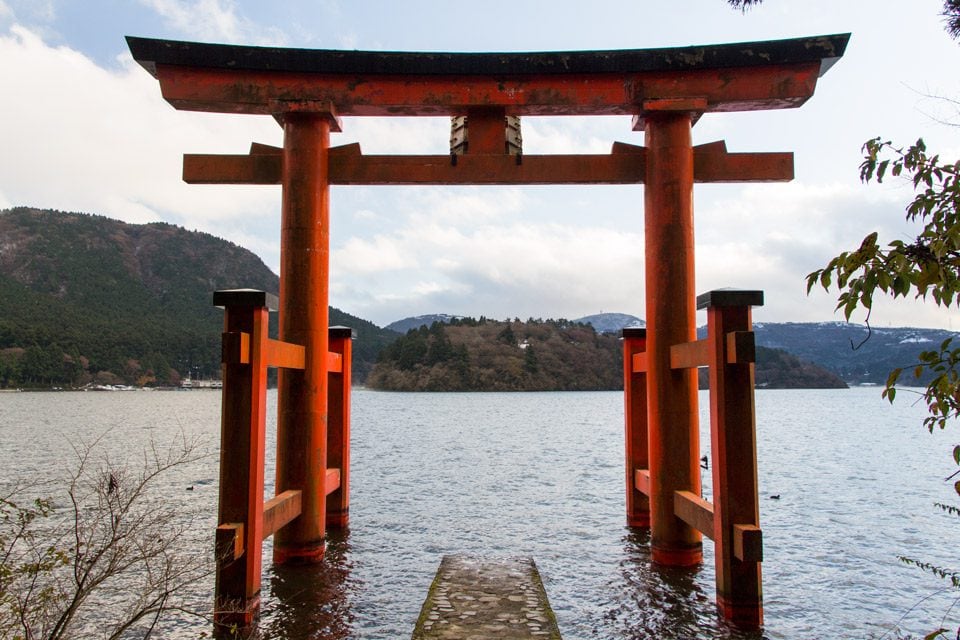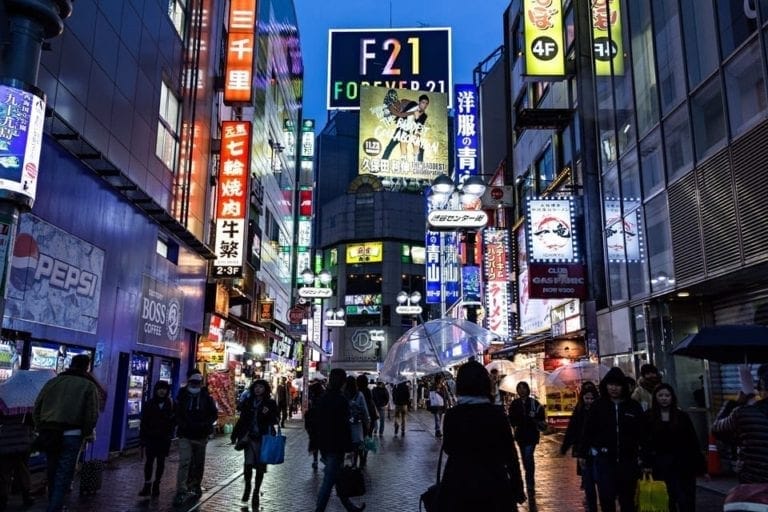Hakone loop itinerary: Perfect day in Hakone area
If you’re thinking of doing a one-day trip to Hakone, this Fuji Hakone pass itinerary – also known as the Hakone circuit or Hakone loop – is exactly what you’re looking for.
We have made – and actually done – this Hakone loop itinerary. It covers most of the must-see spots in Hakone and can easily be done in a day. Although we do not recommend only a day for it – read on to see why.
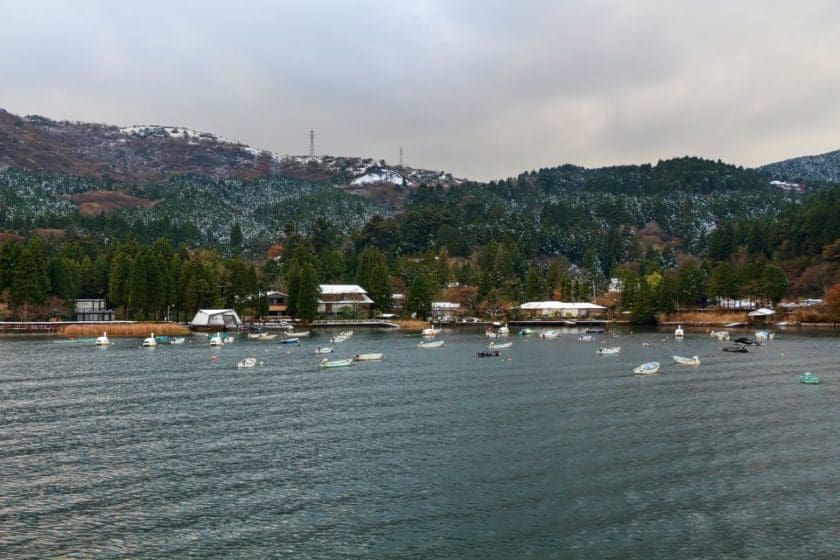
3 Must-do’s at Hakone Loop
It’s a really fun way to explore the area, basically circling around Hakone. And you use five different means of transport to do it!
Anyway, our guide here covers information on what and where is Hakone, how can you visit it, where to stay if you’d like to, and the itinerary itself, as well as additional activities to do in the area. Enjoy!
This post might contain affiliate links, which means that if you purchase anything via them, we might earn a small commission – at no extra cost to you. Check our affiliate disclaimer for more information.
As an Amazon Associate we earn from qualifying purchases.
Our experience from Hakone Loop 1 day Itinerary
A perfect way to enjoy Hakone is to follow a round course itinerary. It encompasses all the main places of interest and uses all the five means of transportation. Actually, six – your feet as well 😊
You can start this 1 day Hakone itinerary at any of the local villages, returning to the same one – as it’s a Hakone circuit. Altogether, it would take around 8 hours to complete, however, that depends on how fast or slow you prefer to enjoy the various places.
Hakone Loop would be doable as a 1-day round trip from Tokyo as well. We recommend exploring at your own pace to fully enjoy the experience. However, if you prefer a more structured approach, consider booking a guided tour from Tokyo to Hakone. This way, you won’t miss any of the key attractions and can enjoy a hassle-free trip.
But as we already said, we really recommend staying in one of the many Ryokan Hakone offers to savor this amazing place at a slower pace. Or you could skip our best-recommended accommodation in Hakone, and book directly on Booking.com and choose what suits you best!
Cablecar from Gora to Sounzan and Hakone ropeway from Sounzan to Owakudani
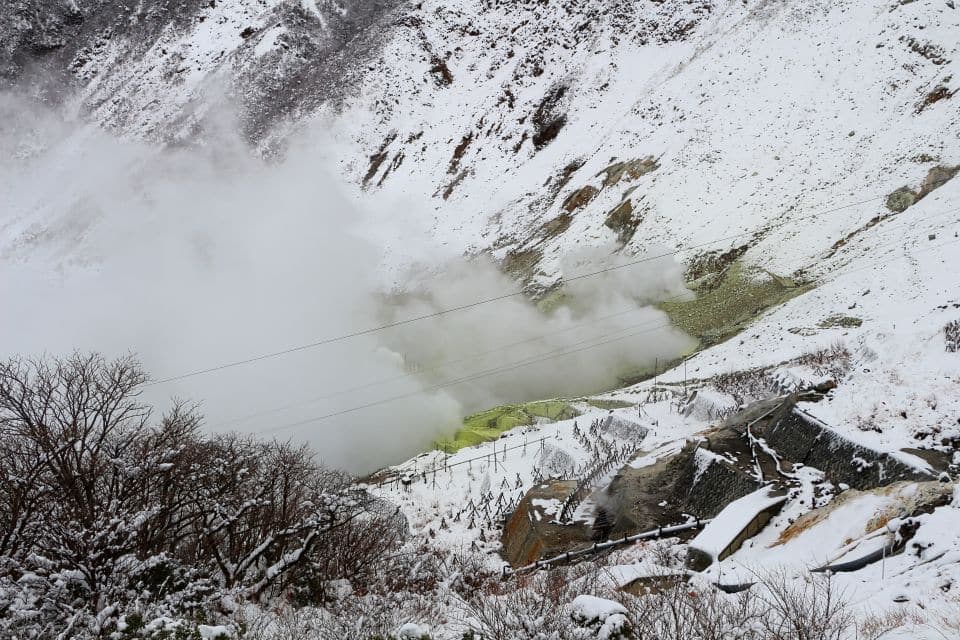
If starting in Gora, hop on the cable car for a 10-minute ride to Sounzan. In Sounzan change for the ropeway and get off at Owakudani.
Owakudani is an active volcanic area – in fact, it is a crater that was created some 3000 years ago during an eruption of Mt. Hakone. Numerous steaming vents spewing sulfurous fumes and bubbling hot pools are found here. Owakudani is also the source of water for many of the onsen in the Hakone area. Mt. Fuji is visible from here on clear days as well.
A peculiar experience not to be missed is the local black eggs (kurotamago). They are boiled in sulfurous water that dyes the shell black and supposedly have more umami flavor than normal hardboiled eggs.
A legend has it that each black egg that you eat adds seven years to your life. While the extra umami flavor has actually been scientifically confirmed, the latter hasn’t 😊.
The eggs are sold only here in Owakudani and make for a perfect snack, so why not try them? As a dessert, try the black bamboo charcoal ice cream (yup, a typical Owakudani snack is black 😊).

Note: A walking trail among the steam vents and bubbling pools in Owakudani is open from 9am to 5pm and requires advance reservation. Allow 30-60 minutes for visiting. If you have respiratory problems, consider skipping the area as the sulfuric gases might make your condition worse. The area occasionally gets a bit too steamy and gets temporarily shut down by the authorities – either whole or some parts of it.
Hakone ropeway from Owakudani to Togendai and the Pirate cruise ship!
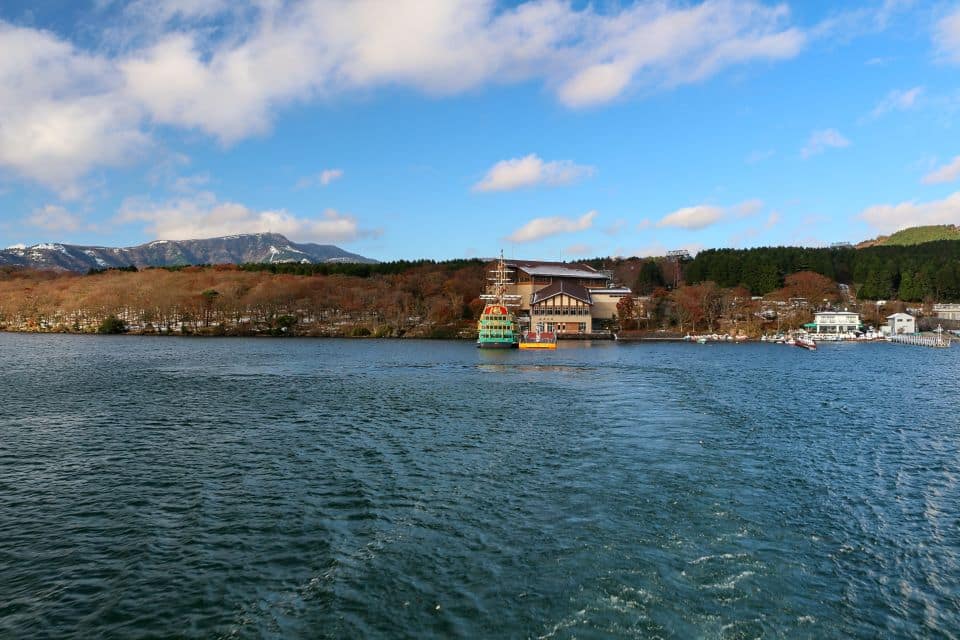
From Owakudani, hop on the ropeway again and continue down to Togendai, enjoying the views of majestic Mt. Fuji on the way (if the weather cooperates, that is 😊).
Togendai sits on the northern shore of the picturesque Lake Ashi and offers several restaurants. By the way, just like Owakudani, Laki Ashiniko also owes its creation to the last eruption of Mt. Hakone 3000 years ago.
When ready, board a pirate ship here and savor the scenic half-an-hour cruise to Moto-Hakone. There are beautiful views from the open upper deck, including Her Majesty Mt. Fuji from the southern part of the lake.
Next up – Moto-Hakone or Hakone-machi
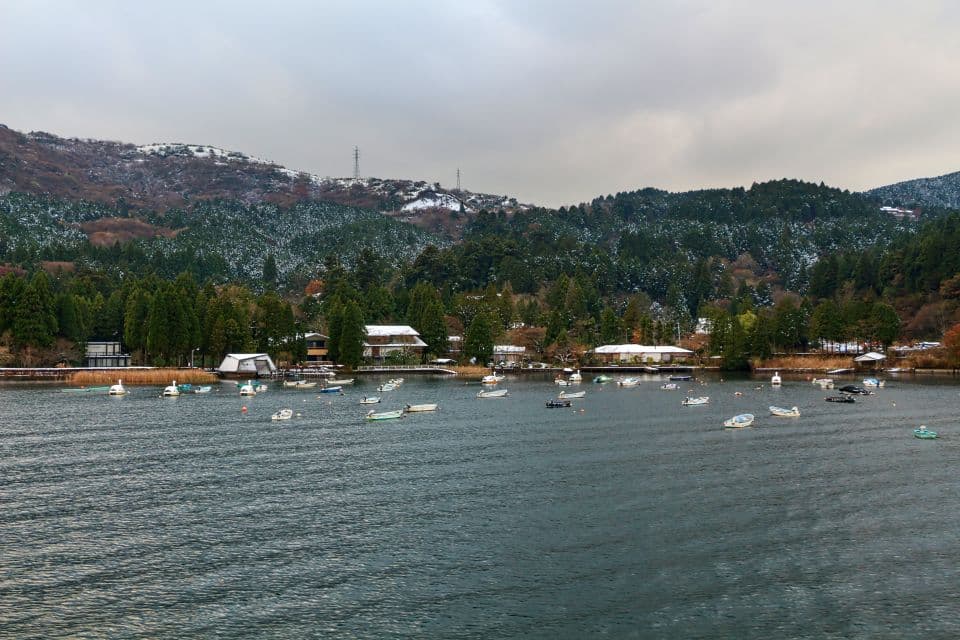
Get off the Hakone sightseeing cruise boat at Moto-Hakone or Hakone-machi.
Both Hakone-machi and Moto-Hakone are situated at the southern tip of the lake and are about a 20-minute walk apart. They boast several interesting places to visit and also offer several good options for lunch.
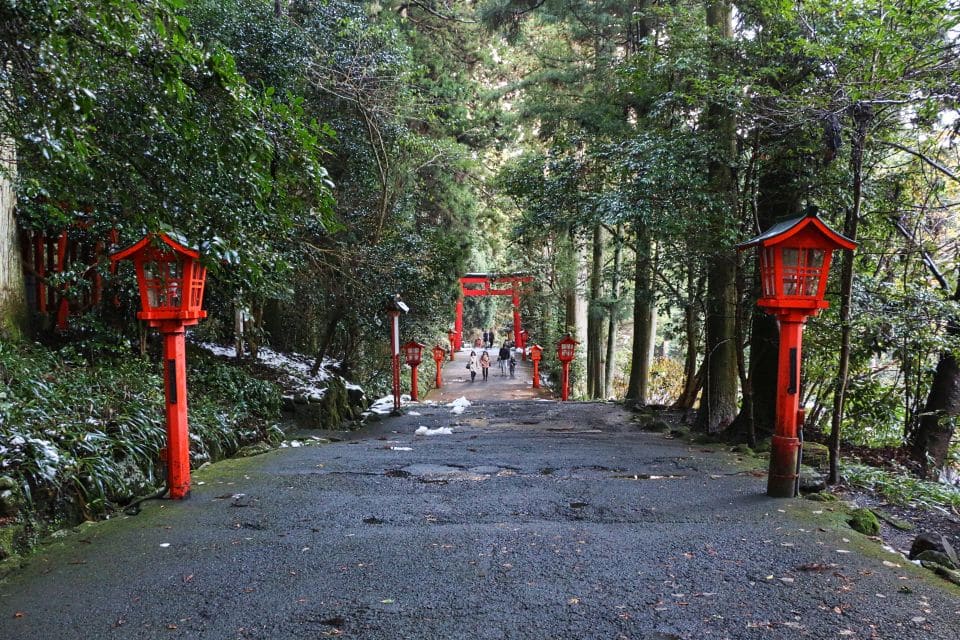
We definitely recommend visiting Hakone Shrine. It’s a breathtakingly beautiful Shinto shrine located about 5-minute walk from Moto-Hakone. The shrine buildings are hidden among tall trees; however, your first clue will be the vermilion torii gates. There are three of them that lead to the shrine, the first one actually standing in the lake itself. From there, follow the steps up into the dense forest to experience the magical atmosphere of the shrine. We were lucky to catch a glimpse of a traditional Japanese wedding here, perhaps you’ll be as well.
The southern shore of the lake is another great spot for admiring views of Mt. Fuji. Our 1-day Hakone itinerary offers several opportunities to enjoy the magnificent vistas of Japan’s tallest mountain. And it’s good to bear in mind that even if Mt. Fuji is often hidden in the veil of clouds, they usually come and go during the day, so if even you didn’t spot Mt. Fuji an hour ago at Owakudani, you might spot it an hour later from Moto-Hakone. A great place for this is Onshi-Hakone Park which lies between Moto-Hakone and Hakone-machi.
Hakone Checkpoint
Hakone used to be an important checkpoint on the ancient Tokaido road, linking Kyoto and Tokyo (then called Edo) many moons ago. Hakone Checkpoint, along with part of the ancient highway, was reconstructed in 2007 and can be visited. Tickets to Hakone Checkpoint, also known as Hakone Sekisho cost 500 YEN, but you can get a discount if you still study, or traveling with kids!
Hakone Sekisho is open daily from 9 am to 5 pm, but remember, if you get there in the winter season, it’s only till 4:30 pm. The last admission is 30 minutes before closing time. However, we recommend to fact-check the information on the official website.
It’s located between Hakone-machi and Moto-Hakone, right next to Onshi-Hakone Park. Even better, you can walk a part of the old Tokaido route – from Moto-Hakone to Amasake Chaya. It’s about a half-an-hour nature walk, partly on cobbles, that will take you to over 400-year-old teahouse Amasake Chaya.
Note: If you have walking difficulties, or if the cobbles seem too slippery after rain, you might consider skipping this. You can instead take a bus (line K from Moto-Hakone bound for Hakone-Yumoto).
Amasake Chaya teahouse
Amasake Chaya has been welcoming visitors – travelers on the old Tokaido road since the 1600s. Its recipe for amasake – a non-alcoholic sweet rice drink – has been unchanged ever since it opened. Enjoy it cold if it’s hot outside, or warm if it’s cold outside, accompanied by mochi – traditional Japanese rice cakes that are handmade here every morning. This is a perfect stop for your afternoon snack.
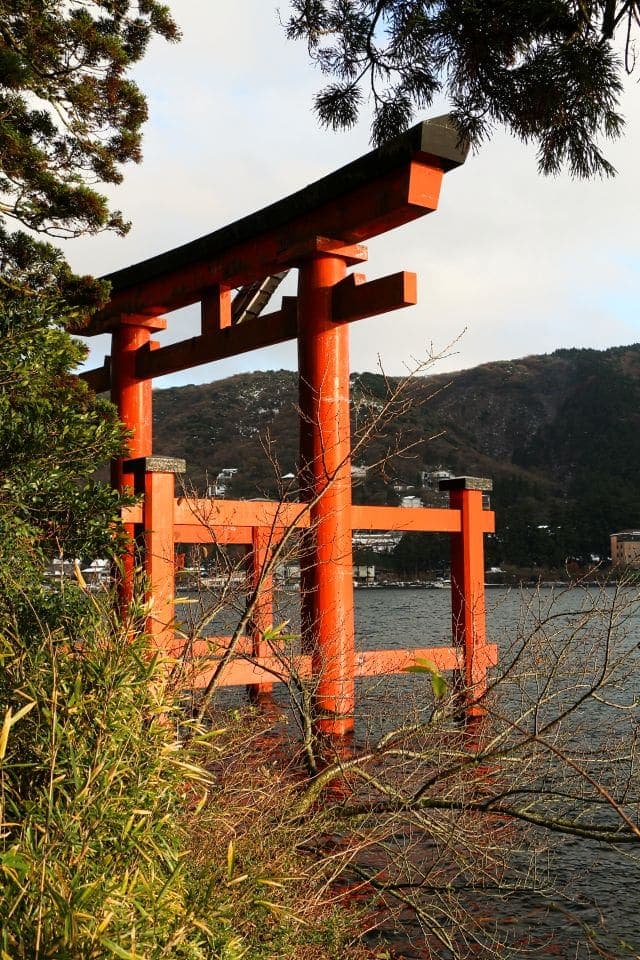
Bus for Hakone-Yumoto and Hakone Tozan train
From here, hop on the bus (line K) bound for Hakone-Yumoto. The bus stop is right in front of the teahouse.
The bus will take you to Hakone-Yumoto, a lively resort town with many hotels and ryokan in the Hakone loop area, numerous public onsen as well as a plethora of restaurants and shops. You might stroll around, perhaps get a souvenir, and then get on the scenic Hakone Tozan train that will take you back to Gora.
It is Japan’s oldest mountain train, winding its way from Hakone-Yumoto to Gora through a densely wooded valley over bridges and tunnels and changing its direction three times at switchbacks. It’s an utterly scenic 40-minute ride. And here we are, back to Gora, where we started in the morning.
Note: This Hakone circuit can be started at any of the local villages – Hakone-Yumoto, Gora, Togendai, or Moto-Hakone. You’ll simply return in the evening to the same spot. Likewise, you might prefer to do the whole circuit clockwise or anti-clockwise – it works both ways.
What is a Hakone Freepass?
Hakone Freepass allows unlimited travel within the Hakone area. It is a convenient single ticket that also saves you money – if you’re following our 1-day Hakone pass itinerary, it definitely is a good value.
It’s available either as a 2-day or a 3-day pass and may cover only the Hakone area or a round-trip between Tokyo Shinjuku and Hakone (for a surcharge). It also allows discounts at numerous tourist spots in the area.
You can get it online or in one of the Odakyu sightseeing service offices located at the train stations in Shinjuku (Tokyo), Odawara and Hakone-Yumoto. But we strongly suggest that you get it online. First of all, it’s actually cheaper than getting it at the Odakyu sightseeing offices. And second, it’s less hassle than purchasing it at the station – you just need to exchange your voucher for the pass.
If you get your pass online, be aware that it can take even 5 working days for it to arrive. If you need to get it sooner, you can contact the seller, they say they might be able to work something out.
How to get to Hakone?
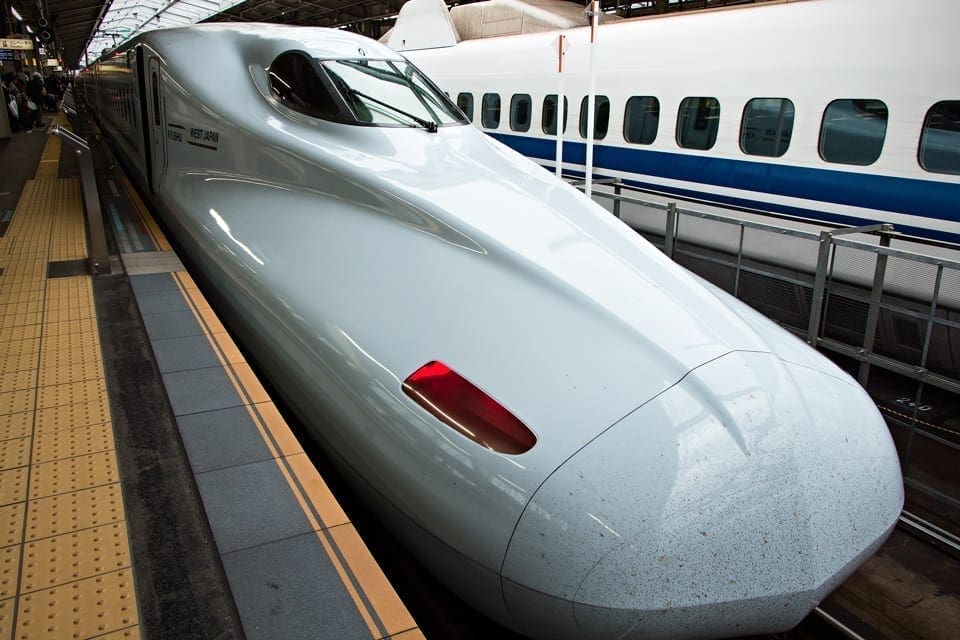
The most convenient way to get to Hakone is by train. There is a direct train from Tokyo Shinjuku station to Hakone-Yumoto operated by Odakyu and is covered by Hakone Freepass (for a surcharge).
This is a convenient option if you’re visiting from Tokyo and also returning to Tokyo. The train journey from Tokyo to Hakone-Yumoto lasts approximately 80 minutes.
However, if you already have a valid JR pass (and if you don’t have, we definitely recommend you buy one, it’s going to save you a lot!), or if you’re coming from (or continuing to) Kyoto instead, we recommend using the JR trains to travel to Odawara (Shinkansen trains from Tokyo and Kyoto stop here). At Odawara station you may get your Hakone Freepass (the cheaper one only for the Hakone area) and hop on the local Hakone Tozan train to Hakone-Yumoto and further on to Gora (or wherever you’re headed to in the area). This is the best option if you’re following our 10-day Japan itinerary.
How to get around Hakone?
The great news is that getting around Hakone is not only super easy but also super fun. The area boasts no less than five different means of transportation – a really scenic train, a cable car (sort of a funicular, if you will), a ropeway (a gondola), a sightseeing boat and a bus.
Hakone Tozan train
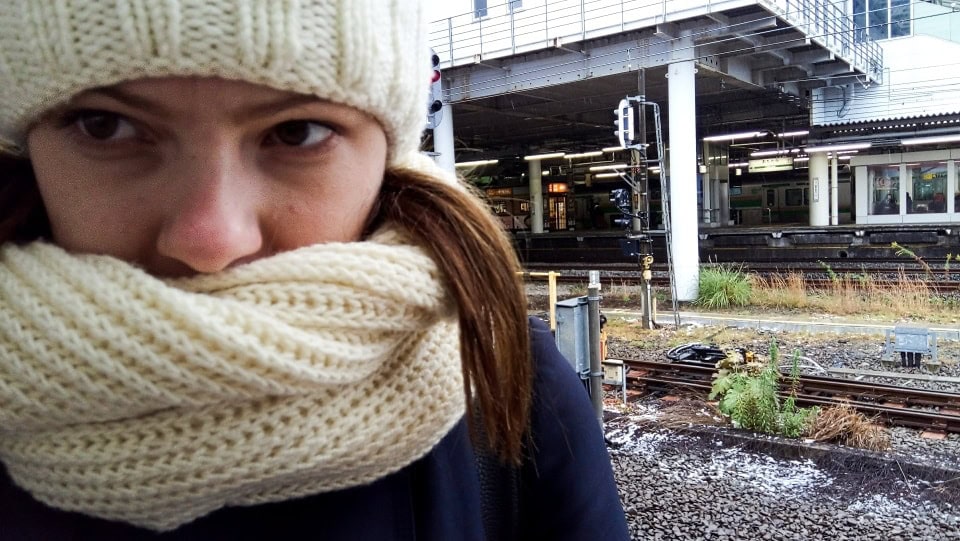
The Hakone Tozan train connects Hakone Yumoto and Gora. This journey takes about 40 minutes and is incredibly scenic. The train gains more than 400 m on this journey, winding its way through a narrow valley. There are several switchbacks where it changes direction – an interesting engineering idea that was needed to help the train overcome the steep terrain. It also connects Hakone Yumoto to Odawara, where one can change for a Shinkansen to Tokyo or Kyoto.
Cable car – Hakone ropeway
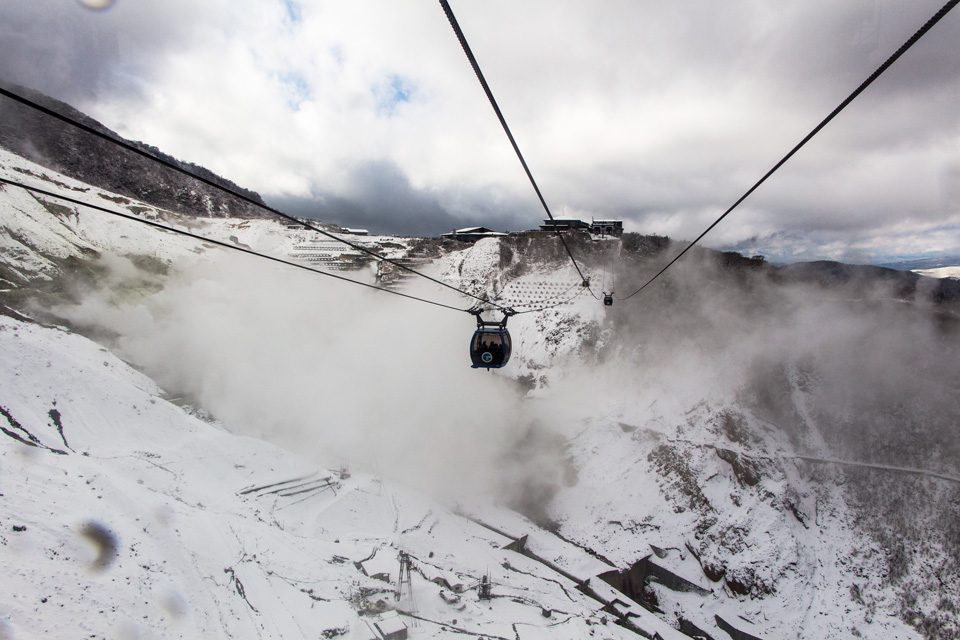
The cable car connects Gora to Sounzan where one can change for the ropeway (gondolas) operating between Sounzan and Togendai. The ropeway has several stops on its way including the active volcanic area of Owakudani. The part between Owakudani and Ubako offers breathtaking views of Mt. Fuji.
Hakone sightseeing boats
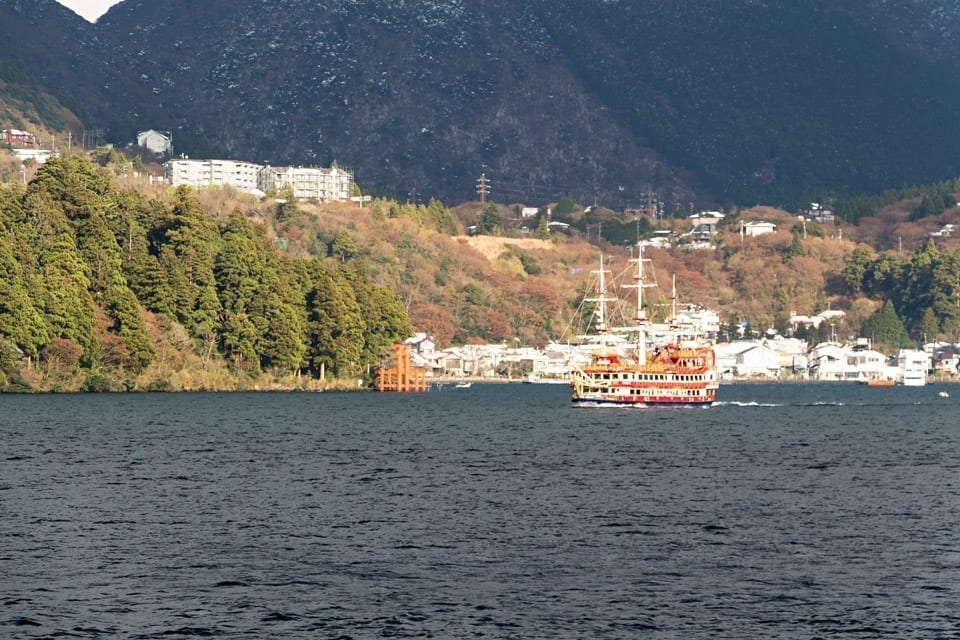
The sightseeing boats connect Togendai on the north of Lake Ashinoko with Moto-Hakone and Hakone-machi on its southern shore. Several companies operate the boats, please note that Hakone Freepass is valid only on Hakone Sightseeing boats. Cruising on these boats that resemble ancient pirate ships is a very pleasant experience. Beautiful views open up from the upper deck – including those of Mt. Fuji from the southern part of the lake. The cruise takes about 30 minutes.
Can you do a day trip to Hakone from Tokyo?
As I’ve mentioned already in this article, yes, it’s quite possible to do a Hakone day trip from Tokyo.
You don’t even have to wake up at dawn – but don’t sleep in, either. The best time to leave Tokyo is around 7am. It takes just under 2 hours to get from Tokyo to Hakone, thus giving you basically a full one day there.
If you take the Odakyu limited Express romancecar, the journey takes approximately 80 minutes but is a tad bit more expensive. Although it does give you better views – there’s a huge panoramic window.
Take the express train from the Shinjuku station to the Odawara station (it’s the Odakyu Line), then change to the Hakone-Tozan Line to go to the Hakone-Yumoto station.
But we do really recommend that you spend a night or two in the Hakone area so that you can have one full day in Hakone. And so that you get to enjoy a one of the Hakone’s ryokan.
Should you do a Hakone Loop as a day trip or overnight?
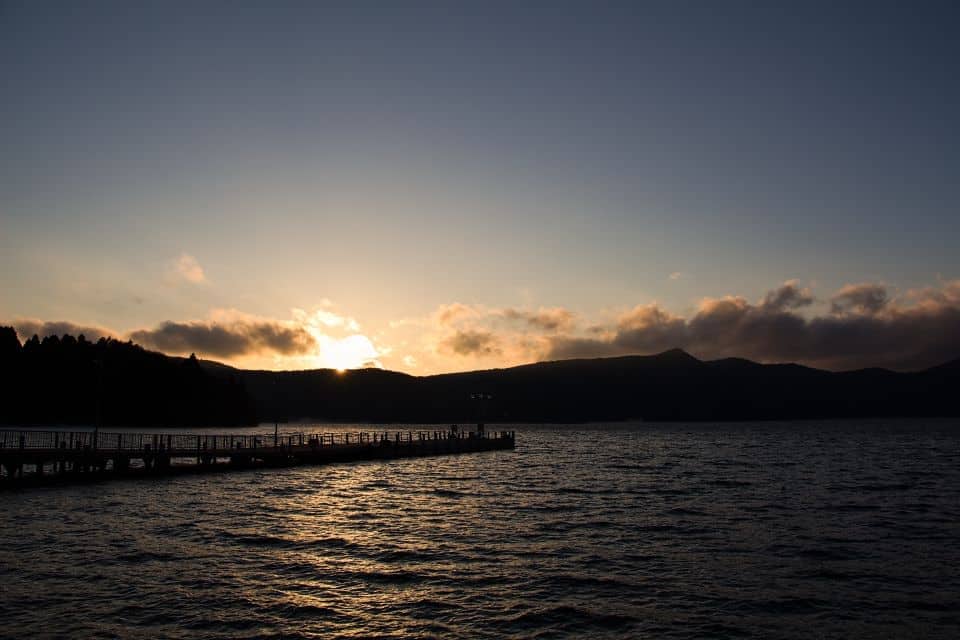
In case you’re still wondering if you should do a Hakone day trip or overnight there, then again, we definitely recommend a stay in Hakone.
That way, you don’t have to worry about catching a train back to Tokyo and can enjoy everything at a more leisurely pace.
Plus, this gives you time to enjoy more of Hakone than a day trip would allow!
If you’d like to create a Hakone 2 day itinerary…
There are loads of things to do in the Hakone area, so if you’d like to create a Hakone 2 day itinerary, it’s easy!
There are many museums in Hakone
The most prominent things to do that we didn’t really include in our 1 day Hakone itinerary are visiting different kinds of museums, of which there are really many in Hakone. Let me mention just a few of them.
Hakone GeoMuseum

If you’d like to learn more about the Owakudani volcano, make sure to visit the Hakone GeoMuseum. It’s located right at the Owakudani station, so this museum might be a perfect addition to your Hakone itinerary. And it’s especially good if you’re visiting Hakone in winter, as it’s a good way to warm up a bit.
And if you’re worried about costs, know that there’s a free exhibition in the museum – we actually went to that one.
Hakone Open Air Museum – discounted entry with the Hakone freepass!
As we already mentioned, the Hakone Open Air Museum is located in Gora. It’s full of artwork and sculptures, including 300 hundred pieces by Picasso that are housed in the aptly named Picasso Pavilion. This museum is the first one in Japan where you can enjoy artwork against the backdrop of nature.
Hakone open-air museum is good for families with children, too. Kids can enjoy attractions like Soap Bubble Castle or Net Forest.
Narukawa Art Museum
The Narukawa Art Museum was opened in 1988 to show entrepreneur Minoru Narukawa’s collection of Japanese-style paintings (Nihonga) from the mid-1950s onward. It’s located on the hill overlooking Lake Ashi, the bright orange floating torii gate of the Hakone Shrine, as well as, of course, mount Fuji. There’s a permanent exhibition of the hidden treasures of China in the Narukawa Art Museum, as well as significant masterworks by contemporary Nihonga paintings.
Hakone Botanical Gardens of Wetlands
Unless you visit Hakone in winter, consider going to the Botanical Gardens of Wetlands. Yes, wetlands, plural, as in this garden, you get to see different types of marshlands – bogs, fens, swamp forests, and others. And there are some 1200 different types of plants that you get to enjoy, both Japanese and from different other countries and areas.
Note: If you’d like to visit several different museums in the Hakone area (including the Botanical Gardens), consider getting a combination ticket – that way, you’ll be able to save some money. The admission prices add up, and even with the Hakone freepass, the discount is smaller than getting a combination ticket. You do have to get a ticket at the museum to combine it with others.
Hiking Lake Ashi
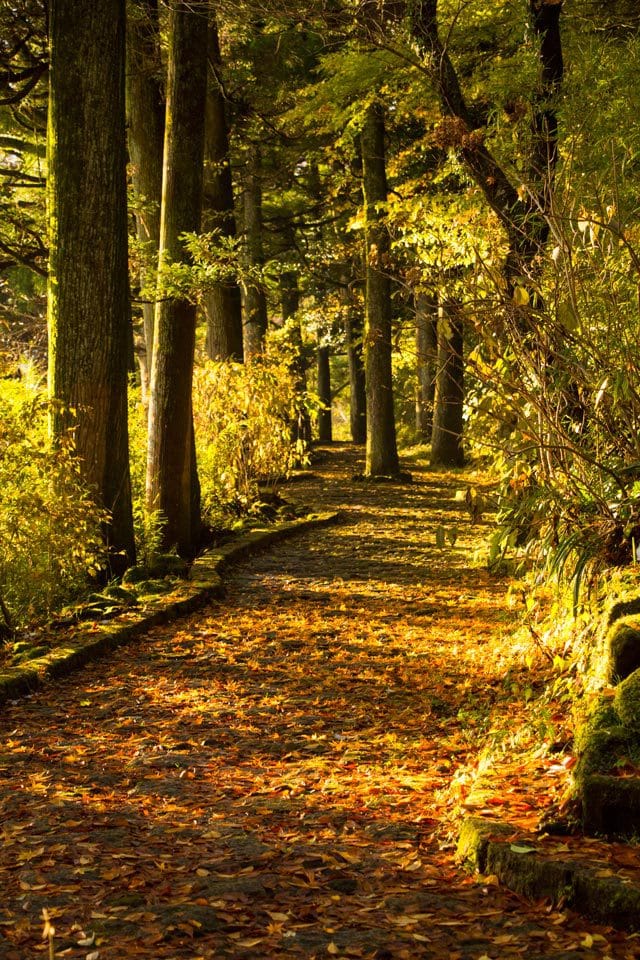
Yes, it’s possible!
There’s a trail by Lake Ashi called Ashinoko Loop Hiking Trail. Although I don’t know why it’s called “loop” everywhere, though, as it’s basically just on the West bank of the lake.
Anyways, it’s an easy-to-moderate and long trail through forests. You can see most of the attractions mentioned here in the itinerary, as well as enjoy beautiful views of the lake.
You can go point-to-point and just take the Sightseeing cruise to get back.
Hiking the Hakone caldera
If you’re in great physical shape, why not spend a day hiking around the Hakone caldera? The caldera traversing takes approximately 4-5 hours and the trail is approximately 9km long. The ascent has a 500m altitude change, and it takes approximately 90 minutes.
During this hike, you get to see Mount Fuji (if it’s not hiding behind the clouds, of course), as well as a bamboo field, Sakura in the spring or autumn foliage in, well, autumn.
Have lunch in a local Japanese restaurant and at the end of the tour, relax in an onsen. Both included!
In case you’re more interested in booking a guided tour, there are plenty of options. Based on our point of view and recommendations from other travelers, we would like to show you this specific tour where you traverse a Hakone Caldera, and will relax in an onsen.
Hakone forest adventure
If you crave a bit of adventure, there’s an obstacle course available up in the trees! Traverse from tree to tree on moving swings, nets, and ziplines. According to the website, there are no age limits (although they state them on some tracks).
Tours to Hakone
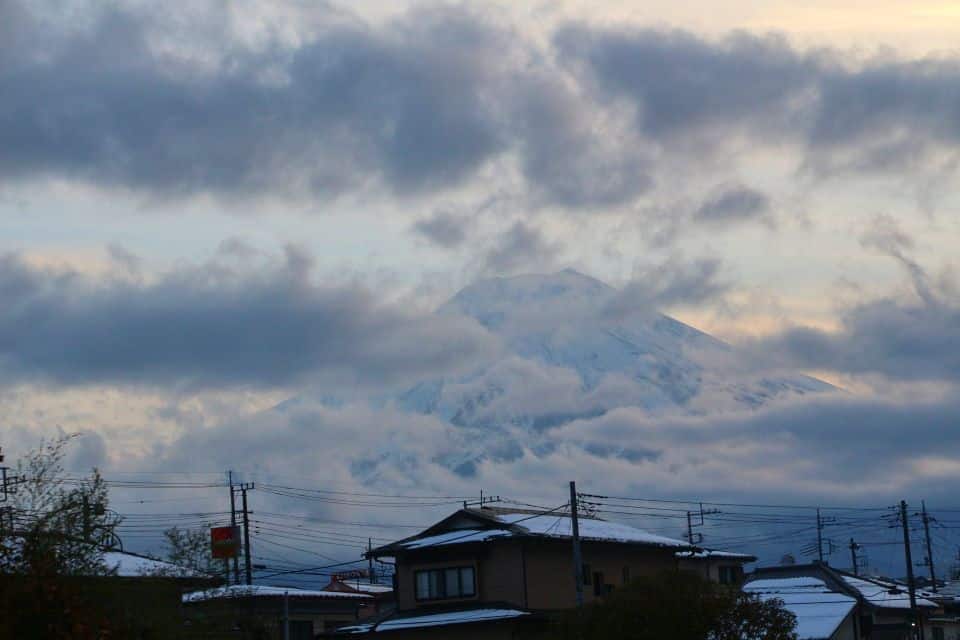
If you’d like to visit Hakone, but even after this article feel like you’d rather have someone else take you there, why not go on a tour?
There are many different ones available.
For example, have a guide that helps you create a full 8 hour private tour of Hakone. Or just have a private pre-made tour, if you really don’t want to think too much about anything.
Both of these tours start and end in Hakone, though.
If you’re in Tokyo and would like to have a day trip to Hakone Loop from Tokyo, check out this one which uses public transport. Or there’s even one which uses private transportation from Tokyo to Hakone Loop.
FAQ: Hakone Loop and Hakone itself
How else is the Hakone Loop called?
The Hakone free pass itinerary; Hakone round course; Hakone Circuit;
How long does it take to do the Hakone Loop?
You can easily do the Hakone Loop in a day, as you see from this itinerary. Even in the winter, if you start early enough.
What to do in Hakone in a day?
The Hakone Loop, of course!
Is it possible to visit Hakone as a day trip from Tokyo?
it’s possible to visit Hakone on a day trip from Tokyo. However, for a more relaxed experience, we recommend considering an overnight stay. If you’re in a hurry, it’s still a good option.
How long to stay in Hakone?
We recommend staying at least 2 nights. That way, you have a full day to do the Hakone Loop and enjoy being pampered for a couple of nights in a good ryokan.
Is the Hakone Loop clockwise or anticlockwise?
Honestly, whichever way you’d like. Some sources say clockwise, some – counterclockwise. We have it written out counterclockwise, though, as that’s what the Japenese suggest.
Did you enjoy this post? Make sure to share it!

